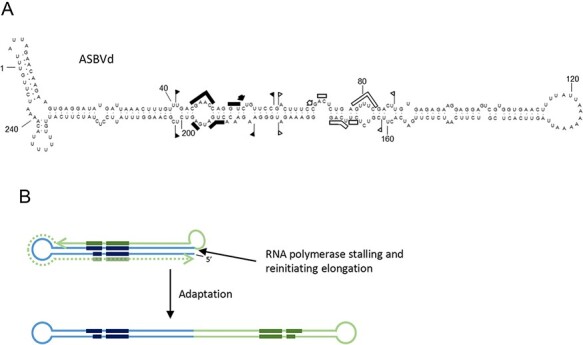Figure 2.

(A) Conformation adopted by ASBVd in vivo according to data from (López-Carrasco and Flores 2017a). The conserved nucleotides of HHRs and the respective cleavage sites are indicated by bars and arrows. Flags indicate the sequences forming the HHRs. Black and open symbols refer to (+) and (−) polarity, respectively. (B) Schematic representation of the origin of a protoviroid of ASBVd from a replicative module containing the HHR. The RNA polymerase stalls at the 3ʹ end of the nascent transcript (light blue line) containing the conserved domains of an HHR (dark blue segments) and reinitiates elongation copying back the nascent transcript up to its 5ʹ terminal (green line), thus generating a structure similar to the original one that may originate the right half of a rod-like structure by mutation and adaptation. Interestingly, the final disposition of the conserved hammerhead domains in such a rod-like structure is the same found in the current ASBVd genome. Additional jumping-reinitiation steps could have add some short sequence forming the additional short HPs observed in the secondary structure of ASBVd.
